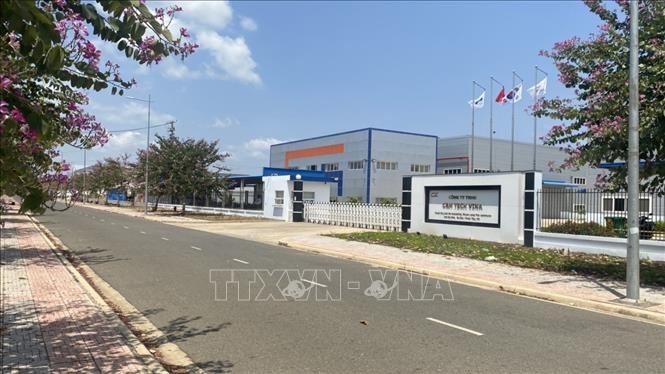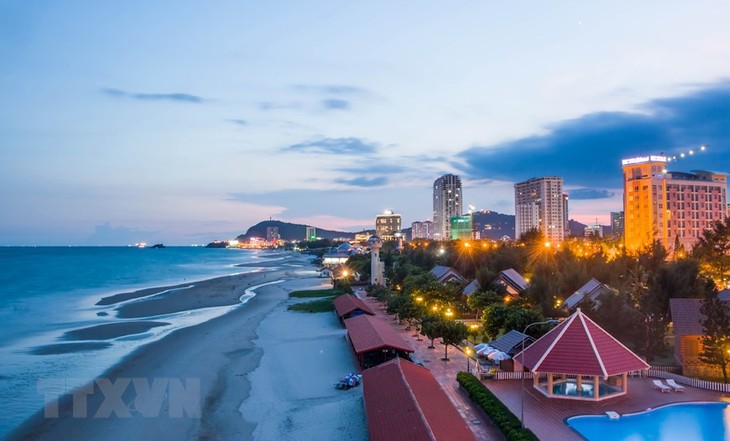(VOVWORLD) - Ba Ria-Vung Tau, a coastal province in southern Vietnam, was established in August, 1991. Over the course of 30 years, Ba Ria-Vung Tau has maintained steady growth, asserting itself as one of Vietnam’s major growth engines. The province’s industrial production, seaport logistics, tourism, and high-tech agriculture should ensure that it’s one of Vietnam’s top provinces for Gross Regional Domestic Product (GRDP) in 2025.
Surmounting all the difficulties it faced in the early days, Ba Ria-Vung Tau province’s creativity, innovation, and solidarity have cleared a path to great achievements and non-stop growth. All of its economic sectors have been scaled up to secure it a pivotal role in Vietnam's Southern Key Economic Hub.
Tran Van Khanh, former Secretary of the Ba Ria-Vung Tau provincial Party Committee, said, “People were delighted by local advancement. We have been united to fostering its development.”
Industrial production, Ba Ria-Vung Tau’s spearhead, accounts for 58% of its economy. That sector consistently produces high-value products. Ba Ria-Vung Tau province aims to become a model of industrial development that doesn’t harm the environment.
 Dat Do 1 Industrial Park in Dat Do district, Ba Ria-Vung Tau province (Photo: VNA) Dat Do 1 Industrial Park in Dat Do district, Ba Ria-Vung Tau province (Photo: VNA) |
429 foreign direct investment (FDI) projects are currently running in Ba Ria-Vung Tau province, with a total registered capital of 29.4 billion USD. Current projects are concentrated in tourism, seaport logistics, and high-quality industry. In the first eight months of 2021, Ba Ria-Vung Tau attracted 17 new FDI projects, worth 216.9 million USD in registered capital. The province has upgraded the infrastructure of its industrial parks to lure greater investment in large environment-friendly high-tech projects. Kyoei, Nippon, Sumitomo, Itochu, Mitsubishi, and Lotte are some of the big corporations that operate in Ba Ria-Vung Tau.
Le Van Dy, former Secretary of the Ba Ria-Vung Tau provincial Party Committee, told VOV, “I believe that linking the local economy to that of the Southern Key Economic Hub is very important. It’s always on the agenda of the provincial Party Congress.”
The province hopes that seaport logistics will take over oil and gas exploitation to perpetuate its prosperity. The 47 seaports in operation in Ba Ria-Vung Tau province handle an average of 137 million tons of cargo a year.
Tourism, one of Ba Ria-Vung Tau’s four economic pillars, aims at high-quality and sustainability. Tourism growth will drive the other sectors forward.
 Ba Ria-Vung Tau province (Photo: VNA) Ba Ria-Vung Tau province (Photo: VNA) |
Nguyen Tuan Minh, former Secretary of the Ba Ria-Vung Tau provincial Party Committee, said, “Public support and the determination of the whole political system were the key to our steady growth over the last 30 years.”
Ba Ria-Vung Tau’s GRDP per capita is 11,400 USD, 12 times what it was in 1992. It has led Vietnam in GRDP per capita since 2000.
Its poverty reduction success has been noteworthy. The number of poor and near-poor households declined from 15,000 in 2001 (15% of total households) to 2,000 in 2020. Ba Ria-Vung Tau province has also improved its health care services.
Nguyen Hong Linh, another former Secretary of the Ba Ria-Vung Tau provincial Party Committee, said, “People’s living standards matter to us. We’re working to raise people’s income and provide them good life services.”
Recent achievements have paved the way for Ba Ria-Vung Tau province to reach new heights.